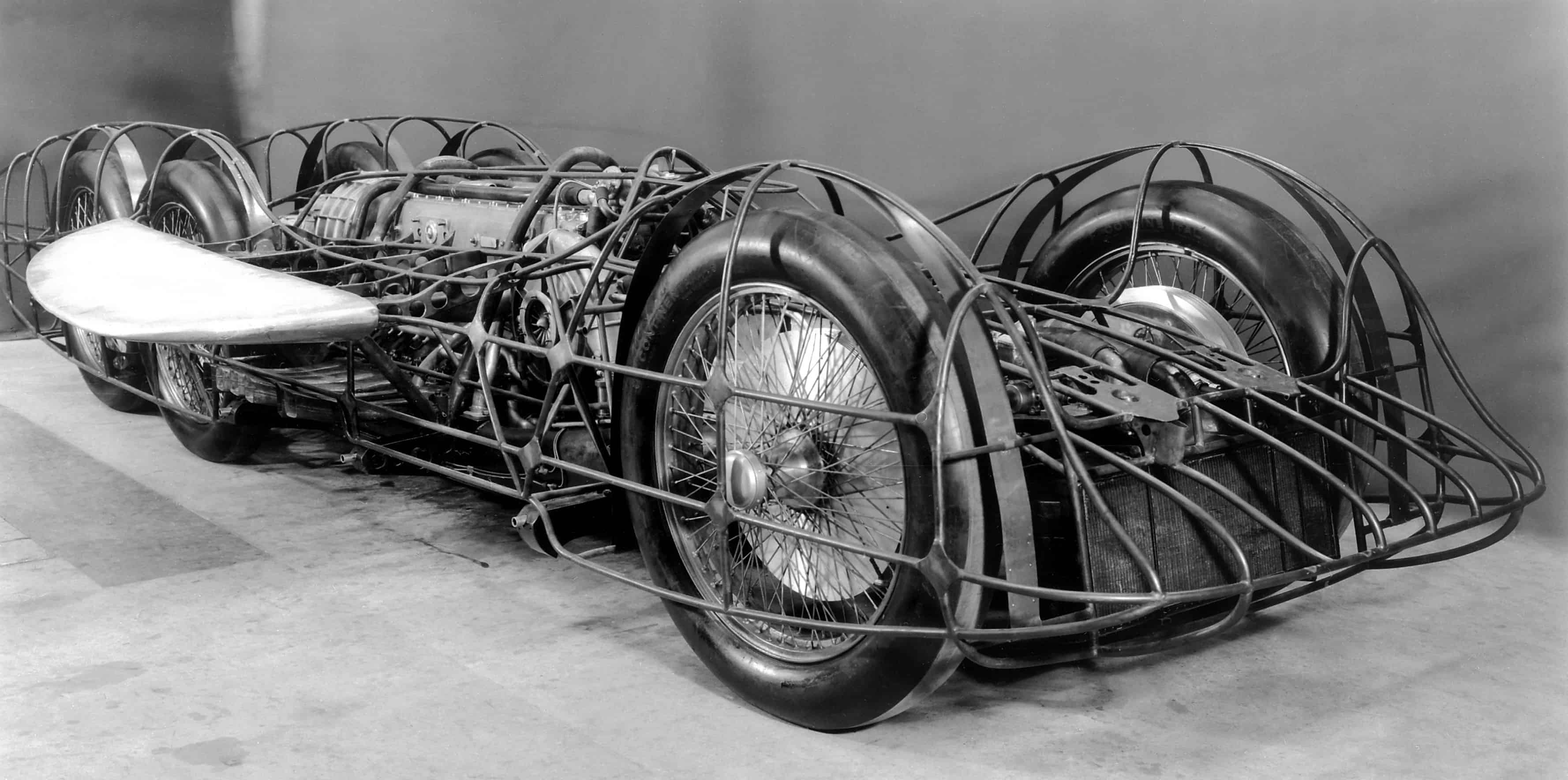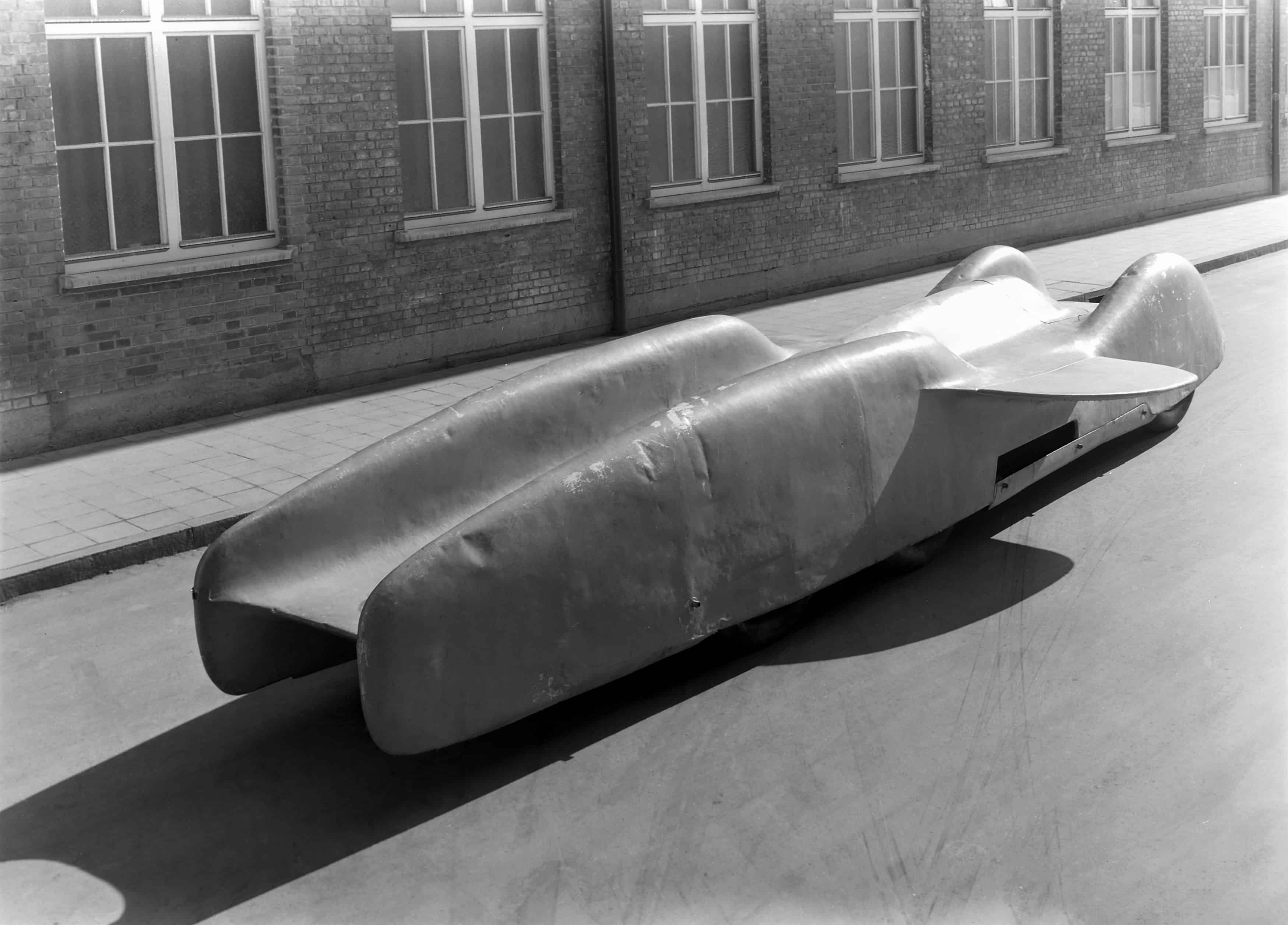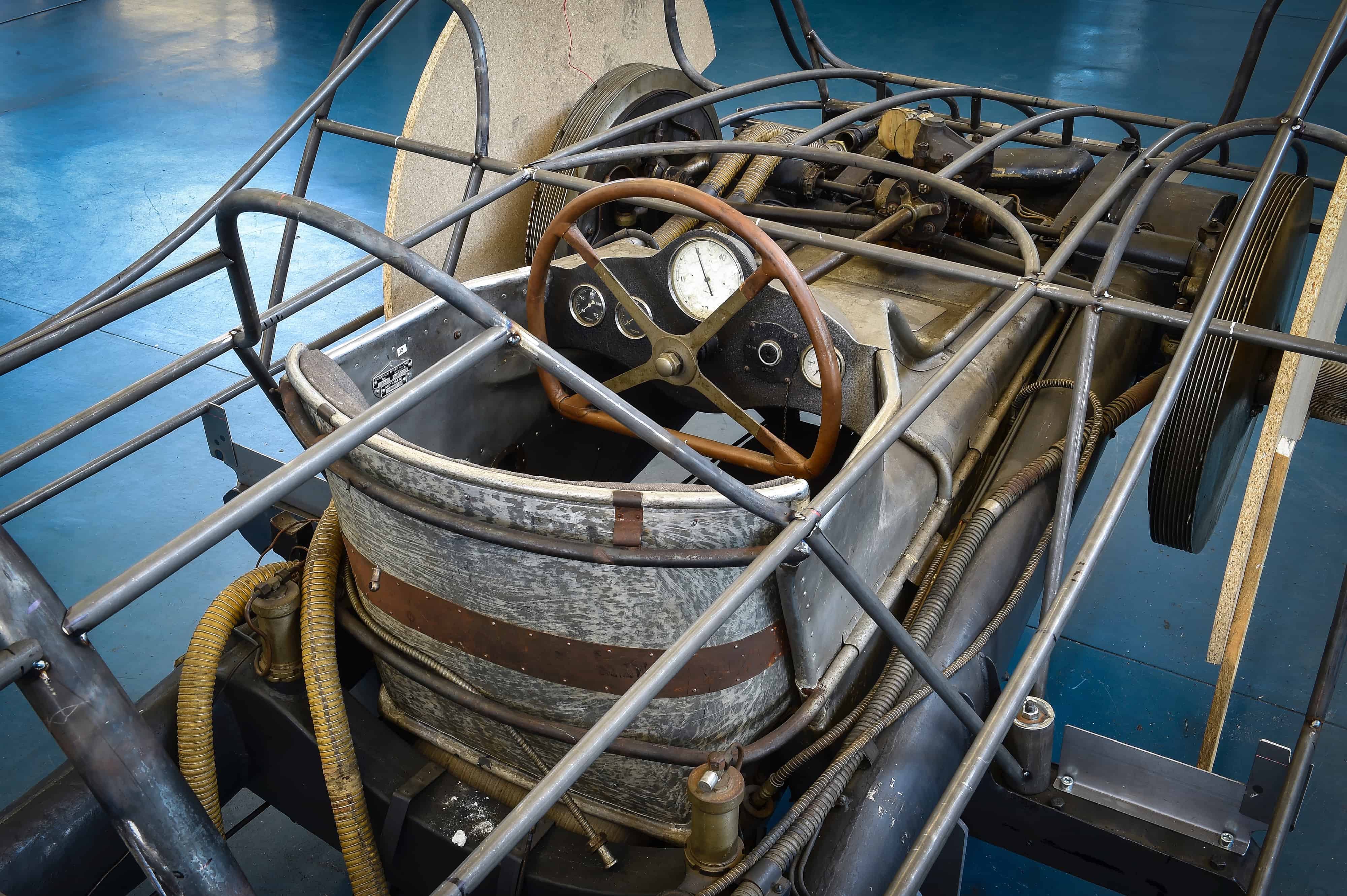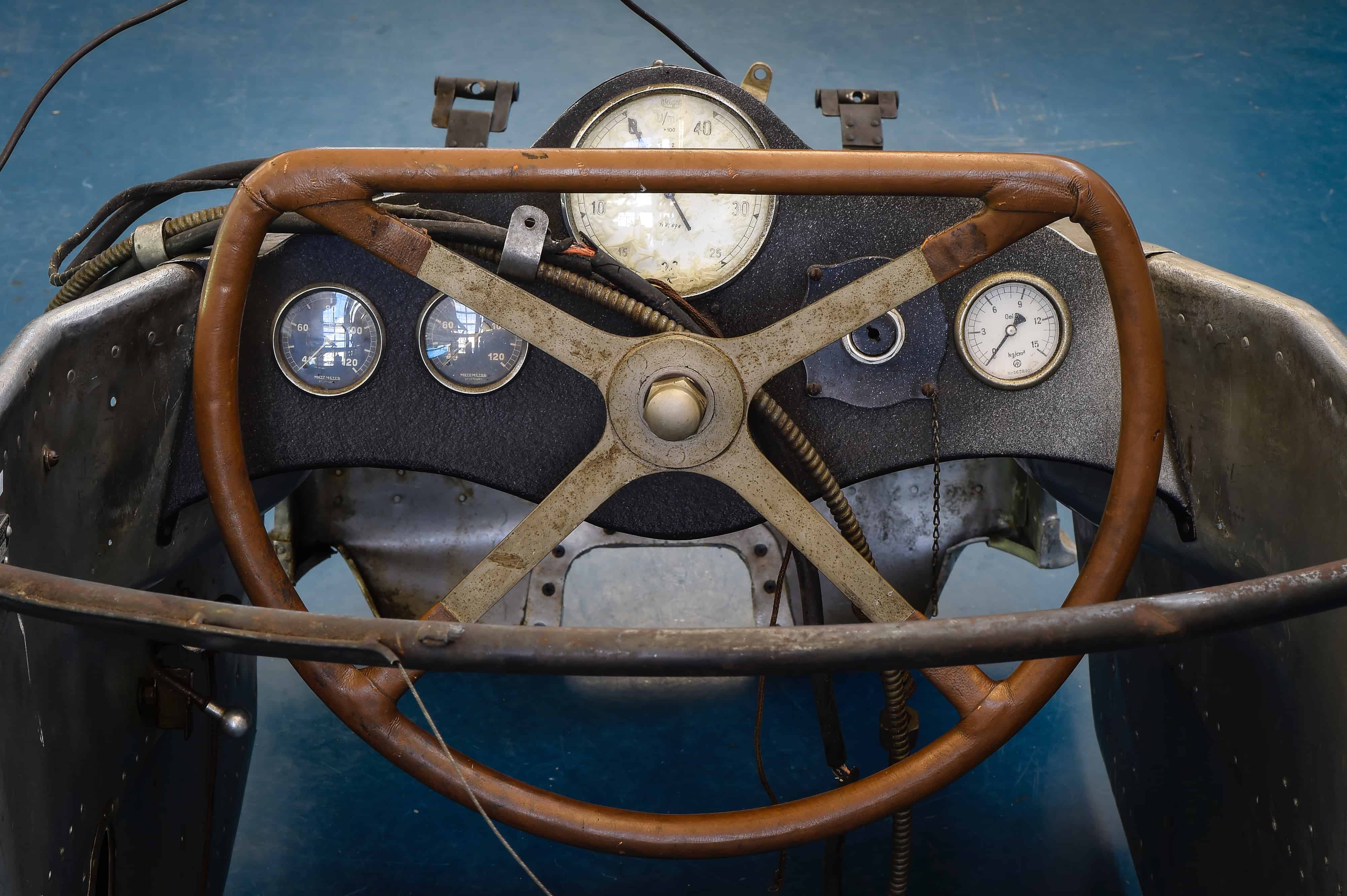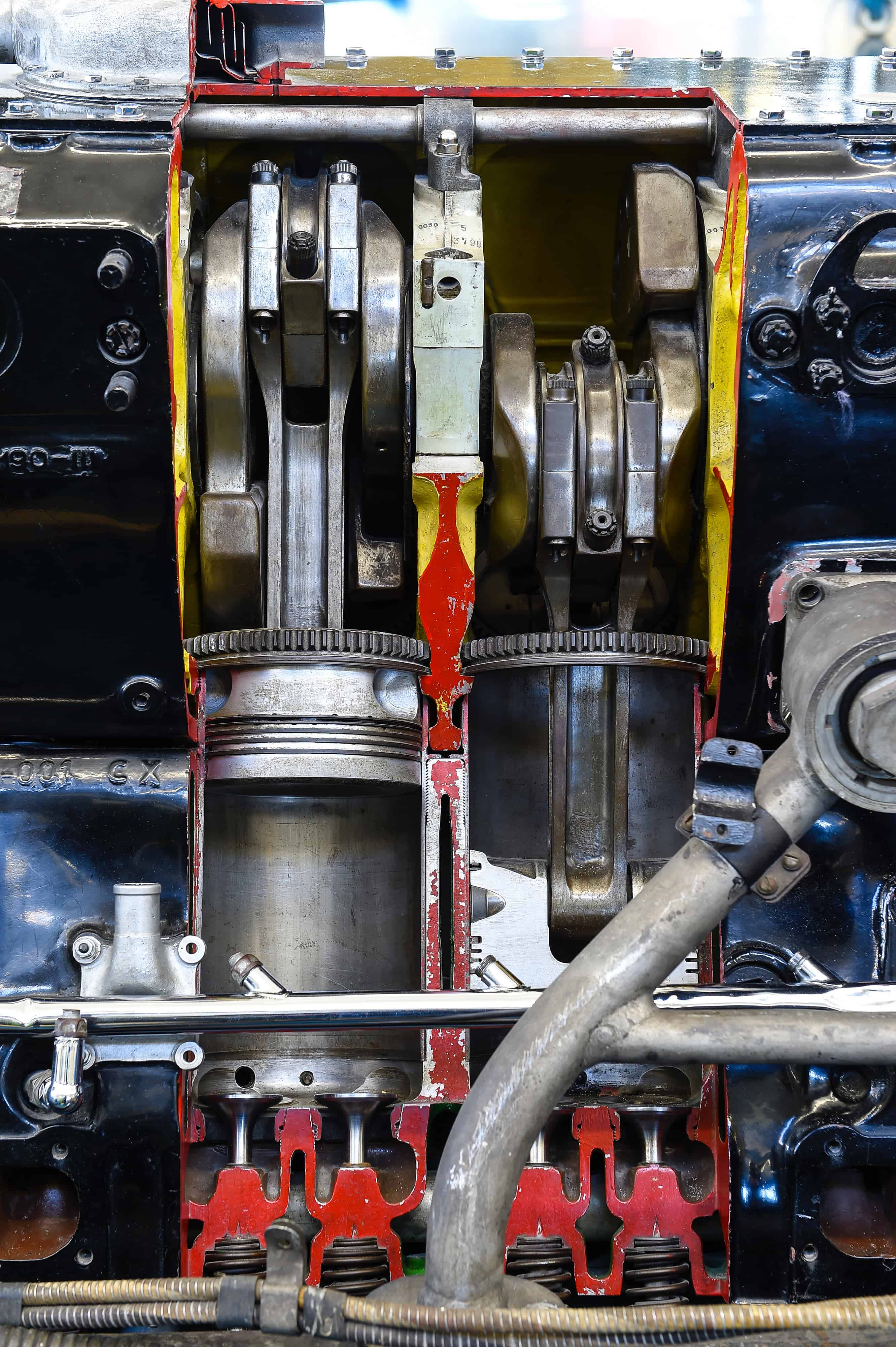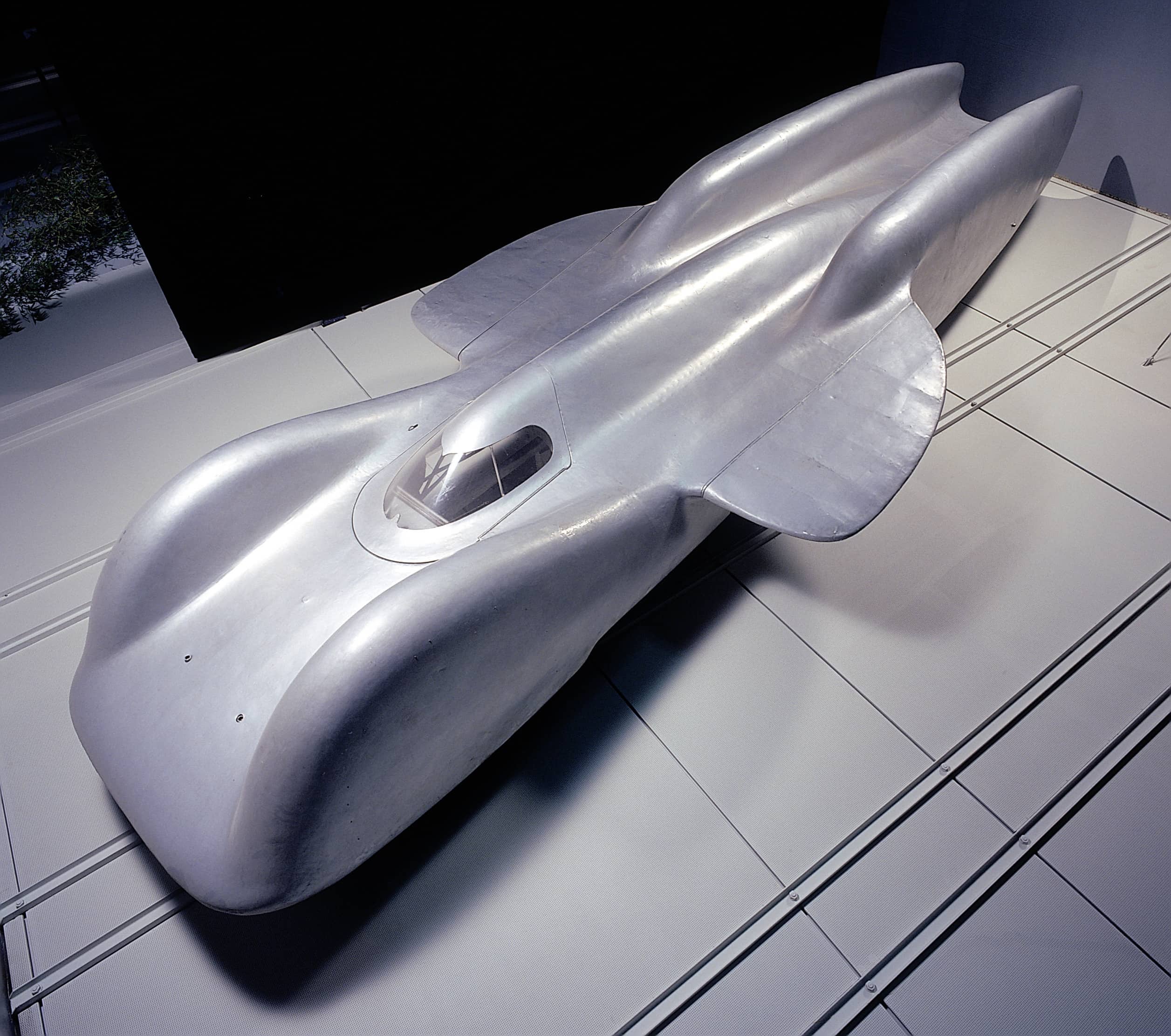Not long after John Cobb and the Railton Special set a new standard for land-bound vehicles, racer Hans Stuck was determined to exceed that land speed record and convinced Daimler-Benz and Ferdinand Porsche to build a car for the attempt. That car was the Mercedes-Benz T 80.
With its swoopy bodywork and 44.5-liter Mercedes-Benz aircraft V12 engine that produced 3,500 horsepower, the car was created to power beyond the 595.04 km/h (369.74 mph) record established by Cobb in August 1939. The plan was to attempt a record run in February 1940 on the autobahn near Dessau.
The T 80 was designed to achieve a top speed of 650 km/h, nearly 404 mph, a standard not actually achieved until 1963.

With the outbreak of World War II, the T 80 was placed into storage. However, the body — complete cockpit with leather-covered steering wheel, pedal cluster, instruments and driver’s seat with original fabric upholstery — has been on display at the Mercedes-Benz Museum in Germany, albeit without the engine.
The body is nearly 27 feet long but only 50 inches tall.
Now a special exhibit has been created with Mercedes-Benz Classic, the company’s collector car division using the original bodywork to re-create the car’s spaceframe chassis.
“The innards of the T 80 are presented just as they were designed and built by Mercedes-Benz eight decades ago,” the company said in its news release.
The original body and re-created chassis are displayed with a cutaway DB 603 engine. Also reproduced were the wheels and tires.
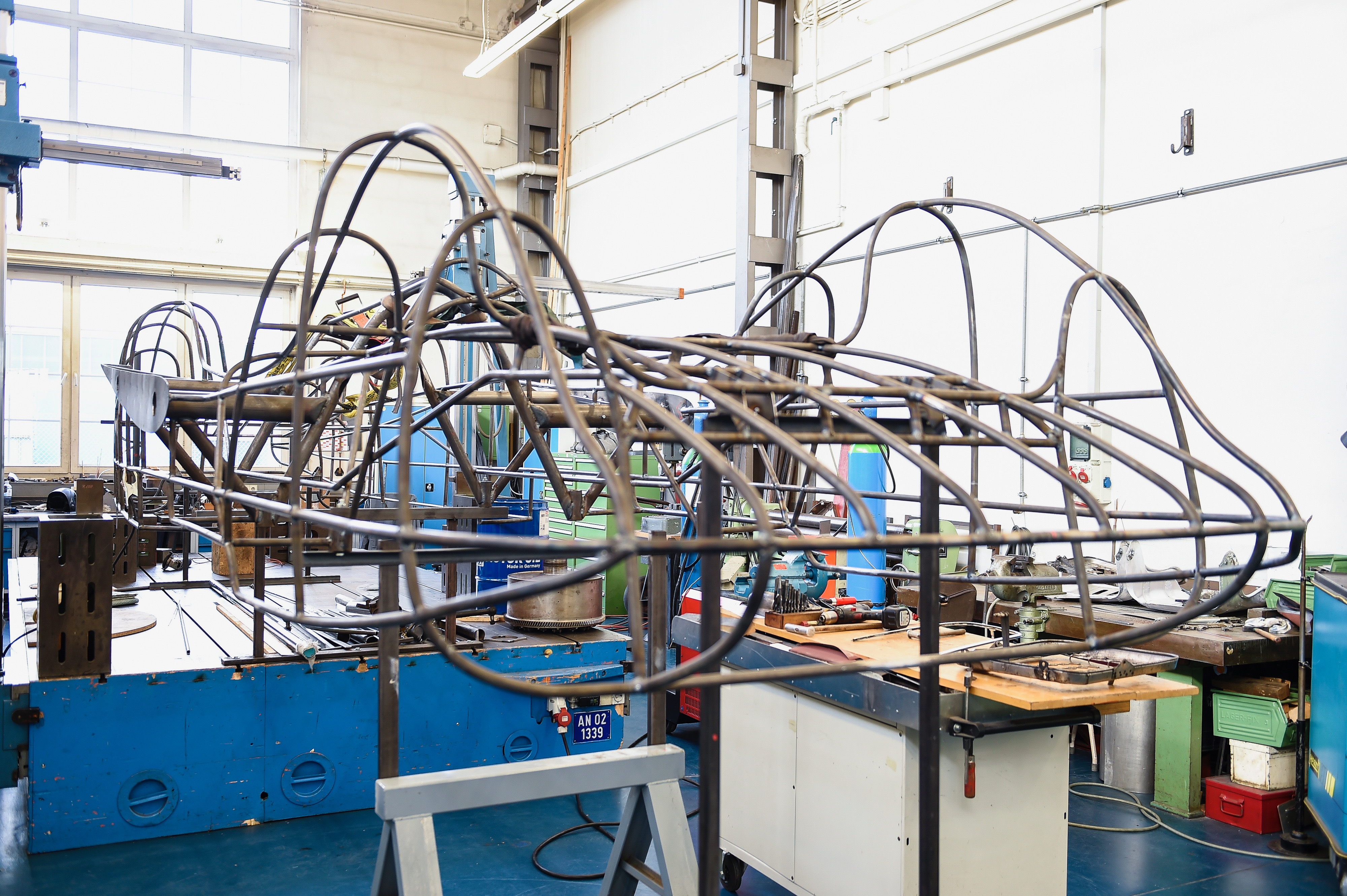
“It was a stroke of luck that the company’s collection also includes a DB 603 aircraft engine,” the company noted. “Because the original engine of the T 80 was a test engine from the aircraft-engine development department in Untertürkheim. It belonged to the Ministry of Aviation, which made it available for the world record project vehicle. When the planned record-breaking attempts were cancelled owing to the breakout of the Second World War, the engine was returned to the aircraft engine department. This original engine for the T 80 is lost without a trace.
“The aircraft engine now installed in the chassis comes from later series production of the DB 603. The series production engine’s connecting dimensions differ from those of the test engine; therefore the connection to the centrifugal clutch of the original chassis is not an exact fit.
“Nevertheless, Mercedes-Benz Classic decided to go ahead and complete the chassis with this engine: firstly, because the DB 603 engine once again makes the astonishing overall dimensions of the T 80 obvious. And secondly, because the engine from the collection is a cutaway engine. It allows profound insights into the technical details, and perfectly rounds off the demonstration exhibit of the T 80 with its open spaceframe as a substructure.”
Mercedes-Benz Classic reports that it took three months to re-create the tubular frame, using 150 meters of 20mm tubing, which had to be flattened in some places to fit within the bodywork.
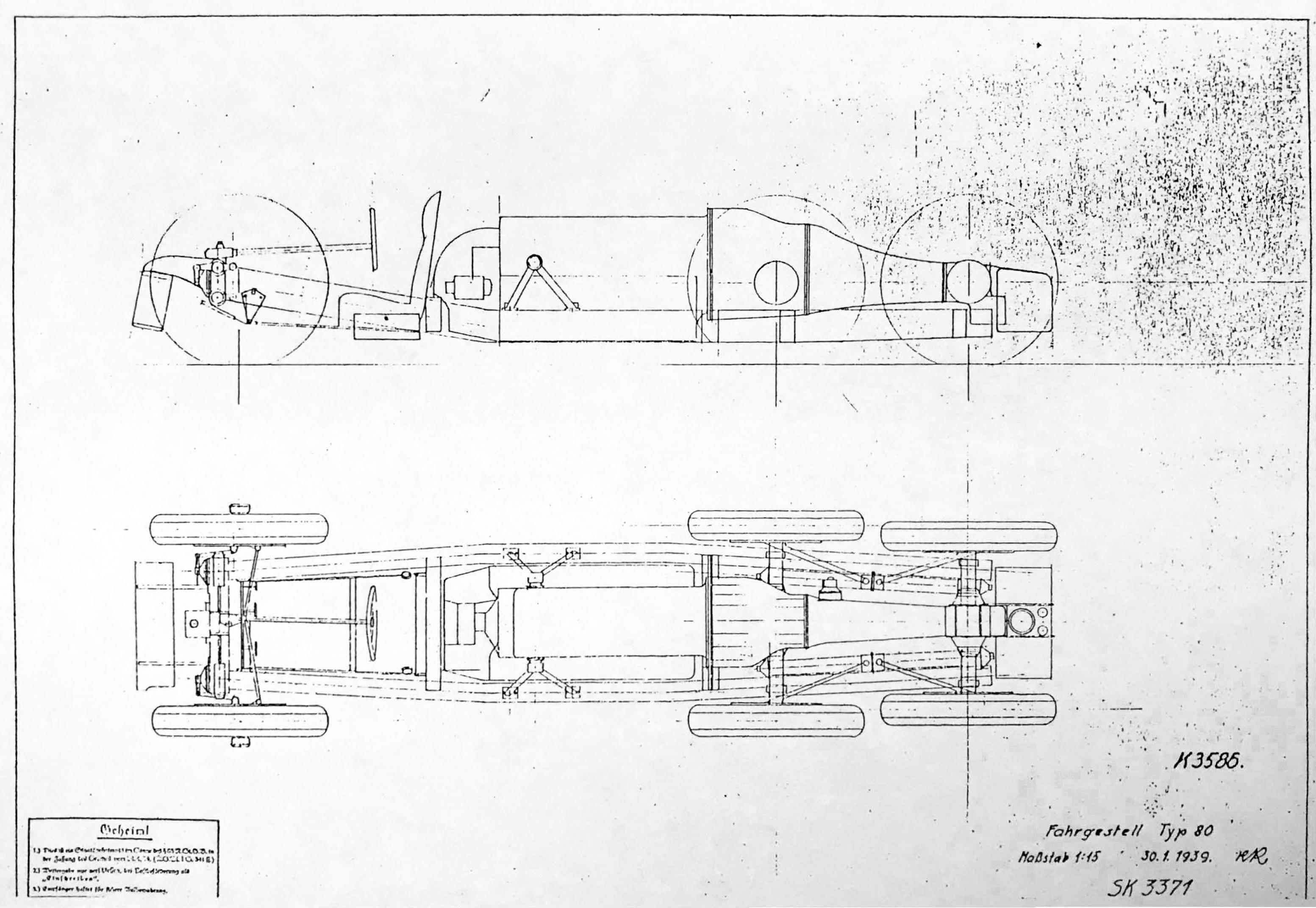
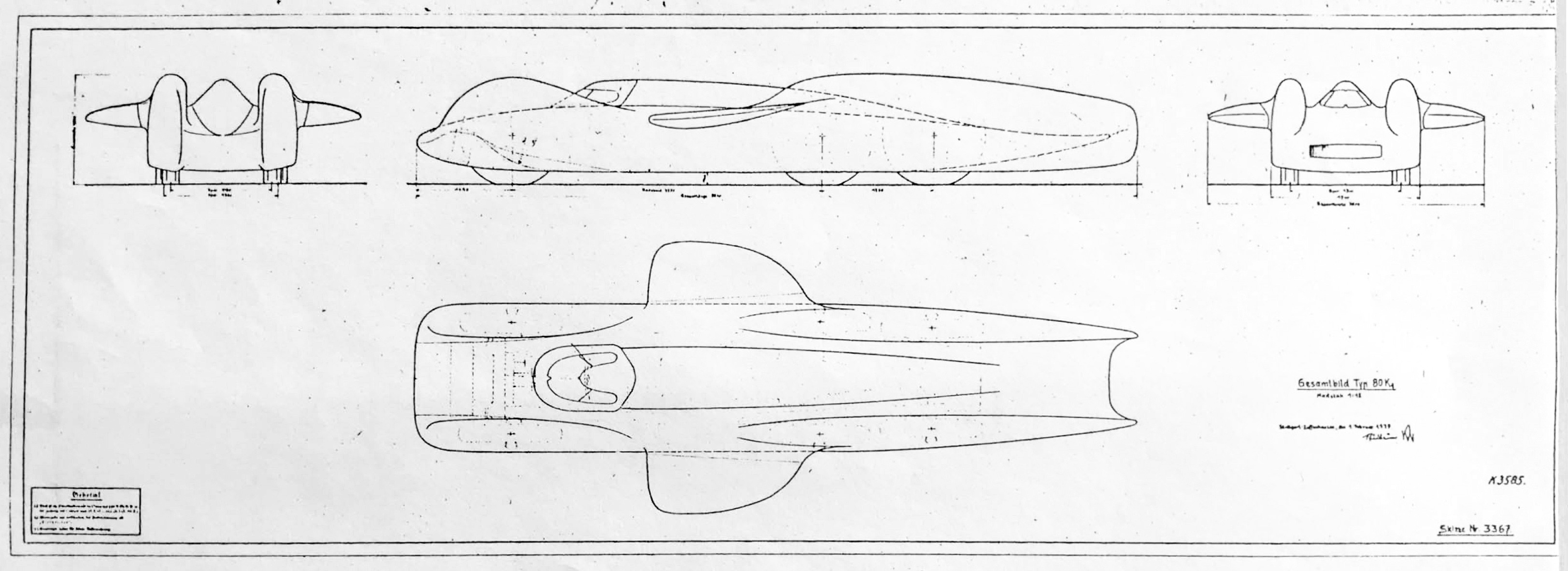
Although it has some 500 drawings related to the original T 80, it needed to use the original spaceframe for reference points to the body connections and supports. That frame is mounted on the banked curve within the “Fascination of Technology” exhibit at the museum, so Classic technicians had to use professional mountaineering equipment to get into position to take the needed measurements.



